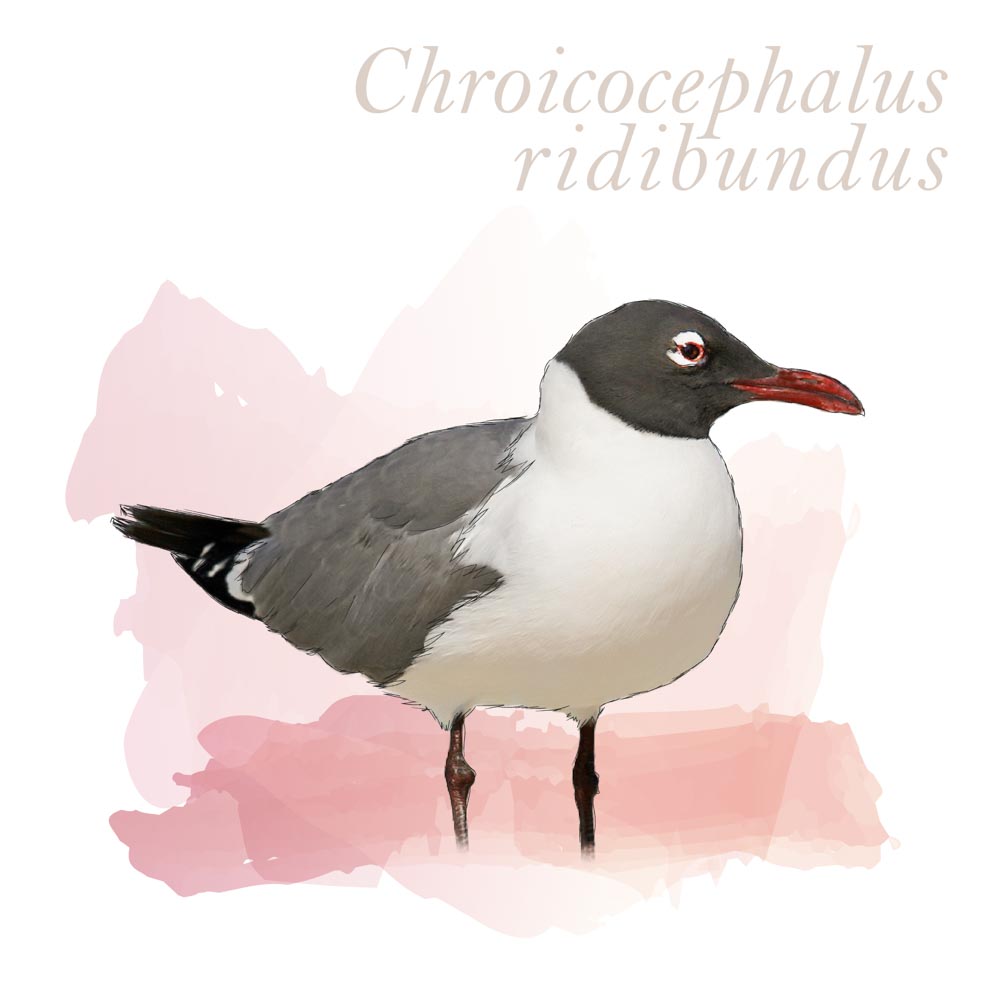Length
35-39 cm
Wingspan
86-99 cm
Classification
Order: Charadriiformes
Family: Laridae

Habitat
It breeds in lakes, reedbeds and marshy areas. Common in ponds, natural inland wetlands and the coastline. It is common to see it feeding in ploughed fields and near some towns, forming large flocks. Due to its ability to feed on almost any organic remains, the population of this species has had a notable increase in its numbers in all the points of the peninsula where it lives.
Description
A small-sized gull, the adult in breeding plumage has a dark brown hood with a red beak and legs. Outside the breeding season and the immature ones have a white head with a dark spot on the cheek and a dark-tipped bill. Adults have greyish dorsal parts while the ventral parts are pure white. In the young ones, the shades are generally brownish-grey. In any plumage it has a white border on the outside of the wing.
Description
A small-sized gull, the adult in breeding plumage has a dark brown hood with a red beak and legs. Outside the breeding season and the immature ones have a white head with a dark spot on the cheek and a dark-tipped bill. Adults have greyish dorsal parts while the ventral parts are pure white. In the young ones, the shades are generally brownish-grey. In any plumage it has a white border on the outside of the wing.
Resident | Transient | Winter | Summer






 Chorro de la Nava
Chorro de la Nava  Meandro del Estajao
Meandro del Estajao